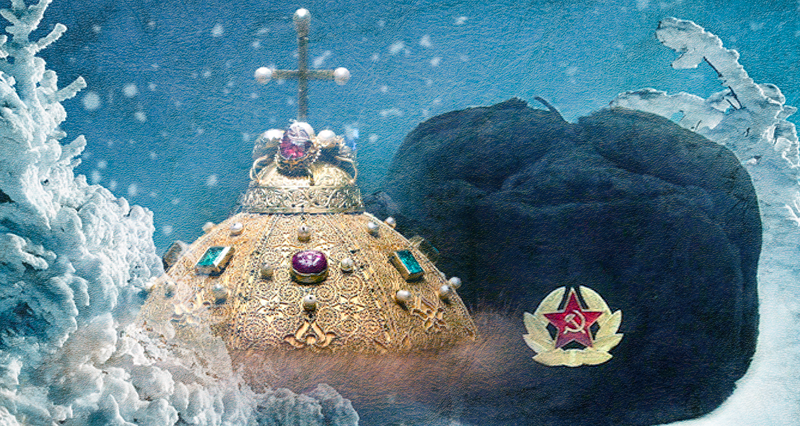Winter has come early to Moscow.
The dawn is breaking with a cold nimbus over the city.
A very spicy marketplace in Moscow
While the lamps in the houses are coming on, those on the streets are slowly going off. People are getting ready. Soon there will begin a great struggle between the city and nature.
Curly smokes rise from the chimney of the factory up ahead, oblivious to what is going on.
Dorogomilovsky Market, right next to Kievksaya Train Station, is in full swing.
Meat from the Caucasus, fish from the cold seas, fruits and vegetables of all kinds are conscientiously placed on the counters.
The slant-eyed clerk sharpens his knife on the one hand, sips his vodka and keeps the conversation going on with the Georgian woman at the next counter, who is on her last legs.
The first guests of the market glide into for the Christmas and New Year’s shopping.
The voices of Tajik, Uzbek and Kazakh vendors’ voices rise up to the sky like an orchestra.
The Tajik vendor’, lined up side by side on the meat counter and as they from the same lathe, move their cleavers up and down.
Arms, legs, kidneys… The most delicious parts of sheep and lambs are packed to be delivered to their buyers.
Just ahead is a fish counter… Lobsters stacked on top of each other in a huge aquarium, watching the passers-by with their bulging eyes.
Standing at the head of the counter, the glitter of the Uzbek’s gold tooth and the fish’s scales mingle with each other.
An old woman from Dagestan shows her customers her pickles with plenty of chili peppers hidden in barrels, as if she was displaying a treasure.
Mingling with the meat, fish and pickles, the smell of the spices on the Azeri’s counter evokes Central Asia…
New sides of Russia
While the streets in Moscow are vibrant, across the border a bitter war with the West is going on.
At the forefront of the debate now is what outfit Russia will wear.
A striped Slavic shirt in Tsarist blue?
Or is it a solid green Bolshevik bonnet?
Is there a color in between?
Do the tanks with red flags in and around Donbas and the black-robed Orthodox priests who come to bless the soldiers in the region contrast with each other, or does the new Russia include both?
The war, which President Putin expects to last “at least 10 years”, is forcing Russia to reshape itself.
The post-1991 capitalist model, integrated with the West, is rapidly evolving into a mixed economy, with a wink to further steps forward.
But the established system, the class relations and the coalitions within the political elite continue to limit the Kremlin in certain areas.
The liberals who despite the war against the West remain in office despite in the economic, financial and Central Bank circles are an example of the “compromises” between the “ancien régime” and the new era.
On the other hand, sanctions continue to force Russia into a more statist and even socialist economy.
In this regard, the radical statements of the Communist Party of Russian Federation, especially those targeting the oligarchs and liberals embedded in the state, deserve to be carefully evaluated.
It would not be surprising if in the coming times, the Communist Party of Russian Federation could once again play a constructive role in Russia’s history.
On the other hand, the “Westernization” fad that has been ongoing since the 90s continues to permeate the corridors of finance, the Western music played in parks and the tastes of young people…

















Leave a Reply